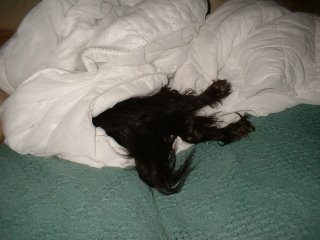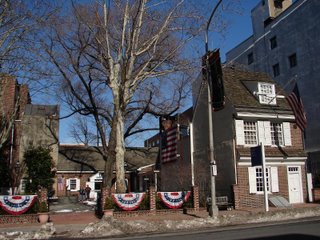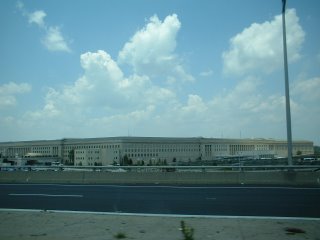
How cute is this, lol!!!??
During the office staffs mid-morning nap I happened to look over to see that Janie had somehow managed to get her front end under the covers and apparently that was good enough!!!
Either that or we lost half of her!!!

What a wonderful sight crossing the TN/AL state line today. The highlight of the Alabama Visitors Center is the complete Saturn 1B from the Apollo program. Of course this aging space buff had to stop and take many pictures!
The Saturn 1B was built in Huntsville AL at the Marshall Space Flight Center and was the brain child of Dr Wernher von Braun.
In July 1962, when NASA announced its intention to use the lunar orbit rendezvous, the space agency also released details on the two other Saturn vehicles. The three-stage Saturn V was planned for the lunar mission. A corollary decision called for development of an interim vehicle, the Saturn IB, to permit early testing of Apollo-Saturn hardware, such as the manned command and service modules, and the manned lunar excursion module in Earth orbit, as well as the S-IVB stage of the Saturn V. This decision permitted such flight testing a year before the Saturn V would be available. Chrysler's initial contract, completed late in 1962, called for 13 first-stage Saturn IB boosters and 8 Saturn I first-stage boosters.

 Clearly seen from the Hwy I took this picture of the Channel 6 Zooballoon during my last trip to Philly!
Clearly seen from the Hwy I took this picture of the Channel 6 Zooballoon during my last trip to Philly!


 As I headed through Washington this week to an unexpected CVS visit in Manalapan NJ I was able to snap this picture of the Washington Monument from Hwy 295.
As I headed through Washington this week to an unexpected CVS visit in Manalapan NJ I was able to snap this picture of the Washington Monument from Hwy 295.
 An added treat to my visit to Washington DC was as I walked back to my car and Marine One flew low overhead!
An added treat to my visit to Washington DC was as I walked back to my car and Marine One flew low overhead!


